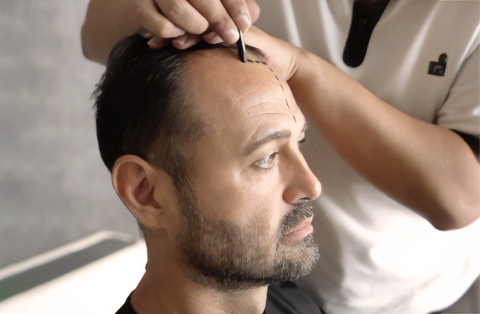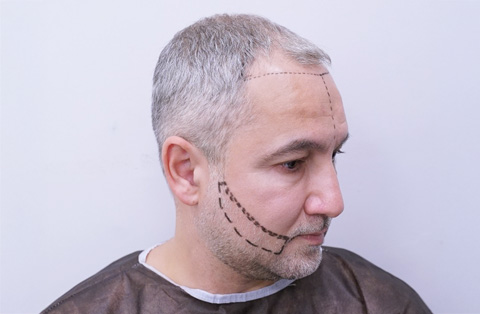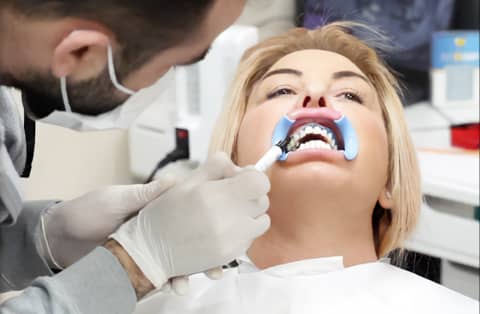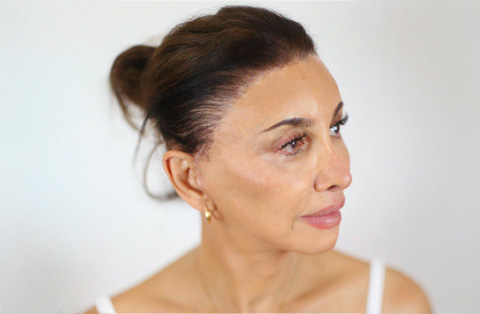Alopecia areata might sound like a complex term, but it’s essentially a condition where hair falls out in small patches. Imagine a beautiful lawn suddenly developing bare spots – that’s similar to what happens to your hair with this condition.
It’s not just a cosmetic issue; it affects about 1-2% of people globally at some point in their lives, making it a topic worth understanding, especially for those interested in cosmetic surgery and hair treatments.
What is Alopecia Areata?
Alopecia Areata is an autoimmune disorder characterized by the sudden onset of patchy hair loss, primarily affecting the scalp. In this condition, the immune system, which typically protects the body from foreign invaders such as viruses and bacteria, mistakenly targets the hair follicles. This aberrant immune response leads to a disruption in the normal hair growth cycle, resulting in hair loss.
The pathogenesis of Alopecia Areata involves a complex interplay of genetic and environmental factors. Genetically, individuals with a family history of autoimmune diseases are at a higher predisposition. The condition is marked by the infiltration of lymphocytes around the hair follicles, which is believed to play a critical role in the disruption of hair follicle function.
Clinically, Alopecia Areata presents as well-defined, round or oval patches of hair loss, with the skin in the affected area appearing normal. The severity of the condition varies, ranging from small, localized patches (Alopecia Areata) to complete scalp hair loss (Alopecia Totalis) or even loss of all body hair (Alopecia Universalis).
Diagnosis is primarily clinical, supported by dermoscopy and, in some cases, biopsy. Treatment options include corticosteroids, immunotherapy, and JAK inhibitors, aimed at modulating the immune response and promoting hair regrowth. However, the course of the disease is unpredictable, and spontaneous remission can occur.
The psychological impact of Alopecia Areata is significant, necessitating a holistic approach to management, including psychological support and counseling.
Understanding Alopecia Areata
Causes and Triggers:
Alopecia areata is like a mistaken identity case where your immune system, which usually guards against germs, mistakenly attacks your hair follicles. This can be triggered by genetics, stress, or other autoimmune conditions. It’s like your body’s security system wrongly identifying a friend as a foe.
- Family History: Higher likelihood if there’s a family history of alopecia areata or other autoimmune conditions.
- Genetic Predisposition: Certain genes may increase susceptibility to the condition.
Autoimmune Response:
- Immune System Dysfunction: The immune system mistakenly attacks hair follicles.
- Associated Autoimmune Disorders: Higher risk in individuals with other autoimmune diseases like thyroid disorders, rheumatoid arthritis, or vitiligo.
Environmental Factors:
- Stress: Physical or emotional stress can trigger or exacerbate the condition.
- Infections: Certain viral or bacterial infections may act as a trigger.
- Toxins and Pollutants: Exposure to environmental toxins could potentially contribute.
Hormonal Changes:
- Pregnancy and Childbirth: Hormonal fluctuations during and after pregnancy can trigger alopecia areata in some women.
- Menopause: Hormonal changes during menopause might be a contributing factor.
Nutritional Deficiencies:
- Vitamin and Mineral Deficiencies: Lack of nutrients like iron, zinc, and certain vitamins may play a role.
- Poor Diet: An unbalanced diet lacking in essential nutrients can contribute to hair health issues.
Psychological Factors:
- Emotional Stress: High levels of stress and anxiety can trigger hair loss.
- Psychological Trauma: Traumatic events can sometimes precede the onset of alopecia areata.
Physical Trauma:
- Scalp Injuries: Physical damage to the scalp might trigger an episode in susceptible individuals.
- Excessive Styling: Harsh hair treatments and styles that pull on the hair can exacerbate hair loss.
Other Possible Triggers:
- Allergies: Some studies suggest a link between allergies and alopecia areata.
- Medications: Certain medications might trigger hair loss as a side effect.
- Seasonal Changes: Some individuals report a seasonal pattern in hair loss.
It’s important to note that the exact cause of alopecia areata often remains unknown, and it can vary greatly among individuals. The condition is complex and multifactorial, involving a combination of genetic, environmental, and immunological factors.
Types of Alopecia Areata:
There are different ‘levels’ to this condition. Patchy alopecia areata is where you lose hair in small spots. Alopecia totalis is when all hair on the scalp is lost, and alopecia universalis is the loss of all hair on the body. Think of it as a volume knob, with the severity of hair loss increasing as you turn it up.
Identifying Alopecia Areata
Symptoms:
The most obvious sign is small, round patches of hair loss on the scalp. It’s like finding small, round patches of dry ground in a lush garden. However, it’s not always limited to the scalp and can affect other areas.
- Patchy Hair Loss: The most common symptom, characterized by one or more round spots of hair loss on the scalp, beard, or other hairy parts of the body.
- Sudden Hair Loss: Hair may fall out suddenly and rapidly, often noticed while washing or combing hair.
- Exclamation Mark Hairs: Short hairs that get narrower at the bottom, often found around the edges of bald spots.
- Bald Spots: Smooth, coin-sized bald areas on the scalp or other areas of the body.
- Scalp Tingling or Itching: Some individuals experience a tingling or itching sensation in the affected areas before the hair falls out.
- Nail Changes: Pitting, white spots, lines, roughness, thinning, or splitting of the nails can occur in some cases.
- Regrowth of White or Gray Hair: In some instances, hair may start to regrow in the bald spots, initially white or gray, before returning to its original color.
- Total Scalp Hair Loss (Alopecia Totalis): Complete loss of all hair on the scalp.
- Loss of All Body Hair (Alopecia Universalis): A more severe form, involving the loss of all hair from the scalp and body.
- Hair Loss in Patches Across the Body: Including eyebrows, eyelashes, and other body hair.
- Uneven Hair Loss: Hair loss might be more extensive on one side of the scalp than the other.
- Regrowth with Texture Changes: Hair that regrows may be finer and possibly a different texture than before.
It’s important to note that alopecia areata can vary greatly in severity, pattern, and duration from person to person. While some may experience only small, isolated patches of hair loss, others may encounter more extensive or even total hair loss.
Diagnosis:
Diagnosing alopecia areata involves examining the affcted areas and possibly conducting blood tests. It’s like a detective investigating a crime scene for clues to solve a mystery.
Factors That May Worsen or Trigger Alopecia Areata
Genetics and Environment:
Just like some people are more likely to get sunburned due to their skin type, some are more prone to alopecia areata due to their genetic makeup.
Environmental factors like stress can act as a trigger, similar to how stress can cause skin breakouts.
Preventive Measures and Lifestyle Changes
Diet and Stress Management: A balanced diet and stress management can be as beneficial for your hair as watering and caring for a garden. They won’t cure alopecia areata but can help in managing it.
Medical Treatments and Therapies
- Corticosteroids: These are anti-inflammatory drugs that can help in hair regrowth, like fixing a damaged garden by nurturing the soil. They can be applied in various forms – creams, injections, or oral medications.
- Minoxidil: This medication widens blood vessels, enhancing hair follicle function and stimulating hair growth, much like fertilizers encourage plant growth.
- Topical Immunotherapy: This treatment creates an allergic reaction that can stimulate hair growth, akin to training the body’s security system to recognize its own cells.
- JAK Inhibitors: These are a newer class of medications that block certain immune pathways, like turning off a malfunctioning alarm system that’s been wrongly triggered.
- Low-Level Light Therapy: This involves exposing the scalp to a specific kind of light, encouraging hair growth, similar to how sunlight helps plants grow.
Emerging Research and Future Treatments
The field of alopecia areata treatment is constantly evolving, with new research shedding light on potential future treatments. It’s like scientists are continually discovering new gardening techniques to better care for plants.
Managing Alopecia Areata Psychologically
Losing hair unexpectedly can be stressful and affect self-esteem. Joining support groups and seeking counseling can be as crucial as nurturing the mind and body in any health journey.
Hair Care and Cosmetic Solutions
While medical treatments are pursued, gentle hair care and cosmetic solutions like wigs can be effective interim solutions, much like using a beautiful scarf to cover a bad hair day.
Is Hair Transplantation a treatment for Alopecia Areata?
Hair transplantation is generally not considered a standard treatment for Alopecia Areata. This is primarily because Alopecia Areata is an autoimmune disorder where the immune system attacks the hair follicles, leading to hair loss. Transplanting hair does not address the underlying autoimmune issue, and there’s a high risk that the immune system will also attack the transplanted hair follicles.
In cases of Alopecia Areata, the focus is typically on treatments that modulate the immune response or promote hair growth in other ways. These treatments can include corticosteroids, topical immunotherapy, Minoxidil, and JAK inhibitors, among others.
Hair transplantation may be considered in certain cases where the Alopecia Areata has been stable for several years, meaning there has been no new hair loss or regrowth. However, this is relatively rare, and the decision should be made in consultation with a dermatologist or a hair restoration specialist who can assess the stability and pattern of the hair loss.
It’s important for patients to have realistic expectations and understand that hair transplantation in the context of Alopecia Areata carries significant risks and uncertainties.






